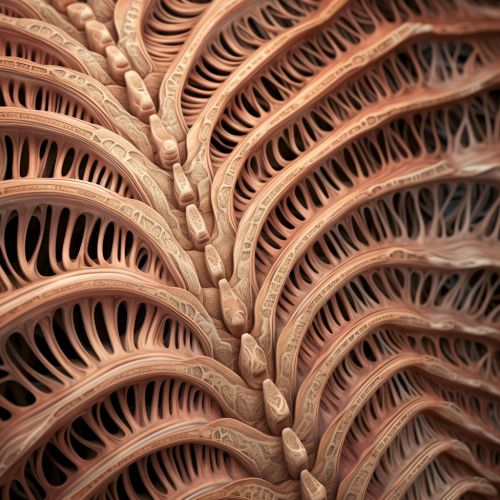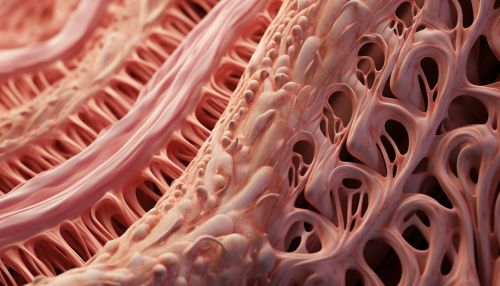Spinal Cord
Anatomy of the Spinal Cord
The spinal cord is a long, thin, tubular structure made up of nervous tissue, which extends from the medulla oblongata in the brainstem to the lumbar region of the vertebral column. It encloses the central canal of the spinal cord, which contains cerebrospinal fluid. The brain and spinal cord together make up the central nervous system (CNS).


The spinal cord functions primarily in the transmission of neural signals between the brain and the rest of the body but also contains neural circuits that can independently control numerous reflexes and central pattern generators. The spinal cord has three major functions: as a conduit for motor information, which travels down the spinal cord, as a conduit for sensory information in the reverse direction, and finally as a center for coordinating certain reflexes.
Structure
The spinal cord is segmented, with each segment associated with a pair of bilateral ganglia. Each ganglion, in turn, is responsible for sensory input from specific regions of the body known as dermatomes. The length of the spinal cord is much shorter than the length of the bony spinal column. The human spinal cord extends from the foramen magnum and continues through to the conus medullaris near the second lumbar vertebra, terminating in a fibrous extension known as the filum terminale.
Grey and White Matter
The spinal cord can be anatomically divided into two areas: the grey matter and the white matter. The grey matter makes up the core of the spinal cord and is shaped like a butterfly, surrounded by the white matter. The grey matter is composed of neuron cell bodies, neuropil (dendrites and unmyelinated axons), glial cells (astrocytes and oligodendrocytes), and capillaries. The white matter is located outside the grey matter and contains ascending and descending nerve tracts. The white matter is white because of the myelin sheaths that are present on many nerve fibers which act as an insulator.
Spinal Cord Segments
The spinal cord is divided into 31 segments, each with a pair of dorsal and ventral roots. The 31 segments consist of 8 cervical, 12 thoracic, 5 lumbar, 5 sacral, and 1 coccygeal. The dorsal roots are afferent fibers, primarily transmitting sensory information from the skin, proprioceptors, and visceral organs. The ventral roots are efferent fibers, carrying motor instructions from the CNS to muscles and glands.
Spinal Cord Function
The spinal cord plays a crucial role in motor control, particularly in the control of fine movements, and also in sensory perception, including the perception of pain, temperature, and touch. The spinal cord also controls autonomic functions, including heart rate, blood pressure, and digestion.
Clinical Significance
Injury to the spinal cord can cause a variety of symptoms, including muscle weakness, paralysis, and loss of sensation. Spinal cord injuries are often caused by trauma, such as falls, motor vehicle accidents, or sports injuries, but can also be caused by diseases, such as multiple sclerosis, polio, or spina bifida.
